Desperation builds in Sudanese camps
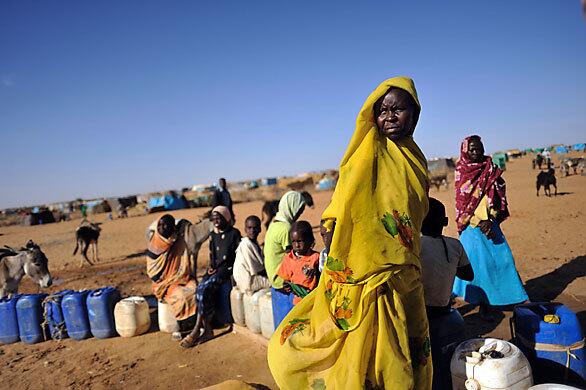
Women and children line up to fetch water from a pump in the Zam Zam displacement camp in North Darfur which is dealing with about 32,000 new arrivals from south Darfur villages. The situation is more desperate now after aid groups that deliver emergency food, water and healthcare were shut down this month by the government after an international arrest warrant was issued against Sudanese President Omar Hassan Ahmed Bashir. (Lynsey Addario / For The Times)
The situation in Zam Zam camp in North Darfur is growing dire with an influx of 30,000 newly displaced people even as the government has expelled 13 key foreign aid groups.
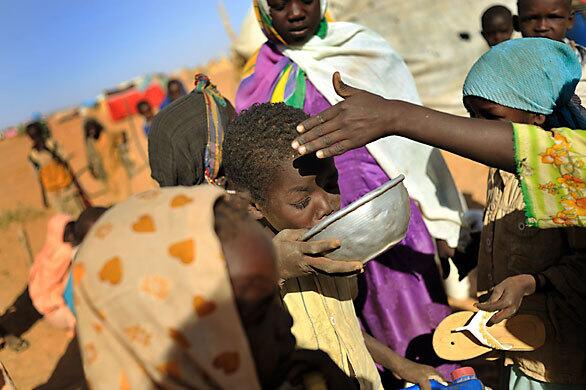
Villagers from Muhajariya fill up water jugs with a water bladder donated by the United Nations mission after complaints that the new arrivals at Zam Zam hadn’t received adequate aid for food, water, shelter, and illnesses. Many claim that an average of four children are dying per week. (Lynsey Addario / For The Times)
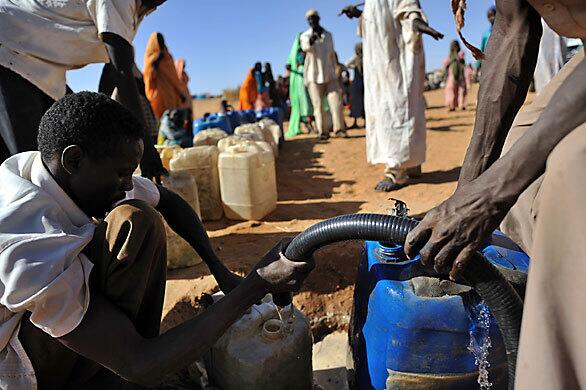
Men fill up water jugs on the edge of Zam Zam camp. Remaining aid groups and the U.N. are scrambling to fill the gaps left by the expulsion of the 13 foreign aid groups, including several of the largest providers of food, clean water, education and healthcare to Darfurs camps. The international community spends more than $1 billion a year in Darfur, one of the largest and most expensive aid efforts in the world. (Lynsey Addario / For The Times)
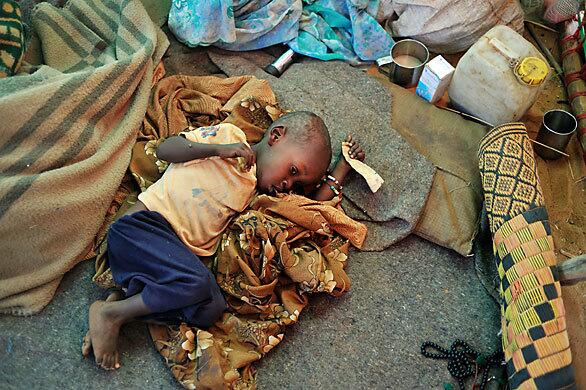
Three-year-old Harun Ali Hajar, whose family fled to the Zam Zam camp from south Darfur, is suffering from diarrhea. The Darfur aid operation was one of the most effective in the world with malnutrition rates, mortality figures and most health indicators below emergency levels since 2005-06. Now the expulsions threaten to reverse those positive trends. (Lynsey Addario / For The Times)
Advertisement
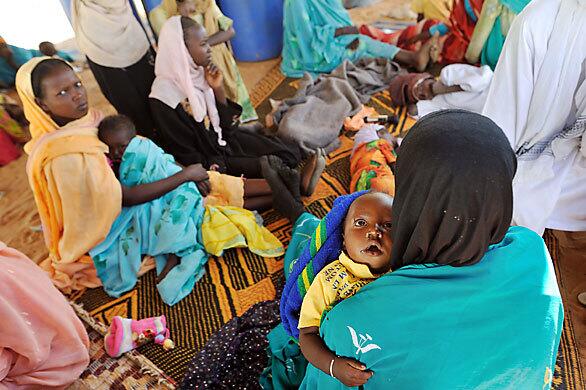
Some of the newly arrived displaced Darfur residents at the Zam Zam camp, which has been overwhelmed by the influx at a time when aid groups were forced to leave. Aid officials say the expelled groups employed nearly 6,000 people, mostly Sudanese citizens, representing about 40% of the humanitarian workforce in Darfur. (Lynsey Addario / For The Times)
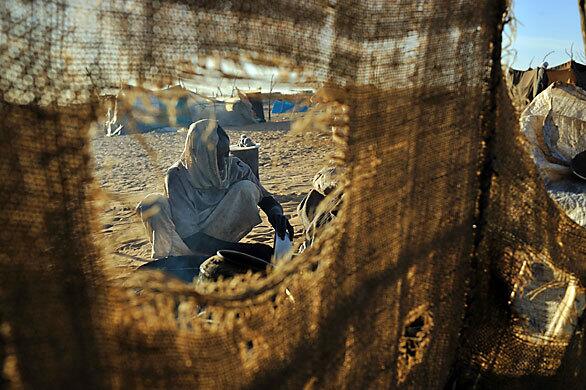
With resources limited at Zam Zam, those who arrived recently are living in makeshift shelters on the periphery of the camp outside El Fasher, in North Darfur. (Lynsey Addario / For The Times)
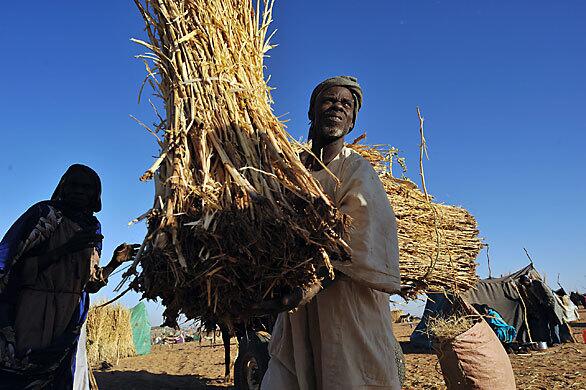
A resident of Zam Zam camp sells straw to others to use to build new homes in the camp. (Lynsey Addario / For The Times)
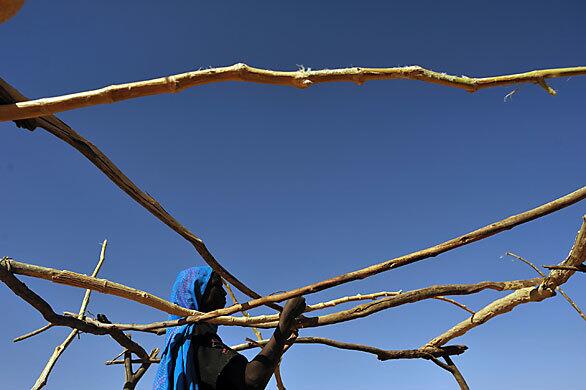
Khawa Ali Mohammad, displaced from from Khazan Jadid village in south Darfur, builds a new house for herself and her children in Zam Zam camp. (Lynsey Addario / For The Times)
Advertisement
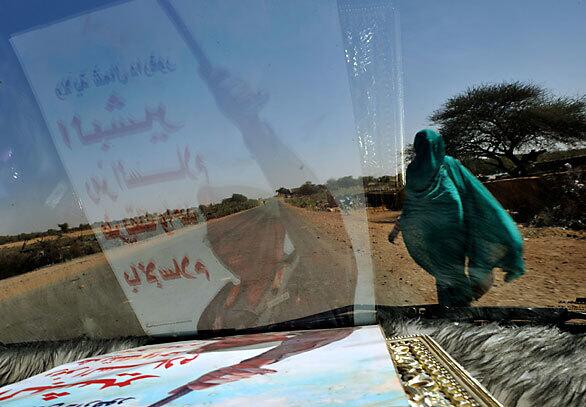
A poster of Sudanese President Omar Hassan Ahmed Bashir sits on the dashboard of a taxi in El Fasher. Soon after the arrest warrant was issued against him, Bashir accused the aid groups of gathering evidence against him and of using resources inefficiently. His government has said it will meet the shortfall from the expulsion. (Lynsey Addario / For The Times)



